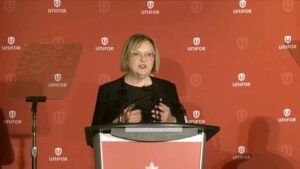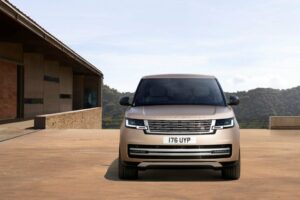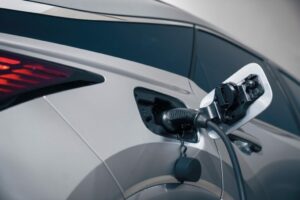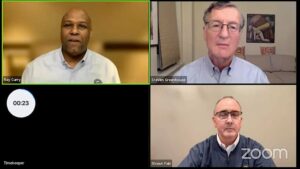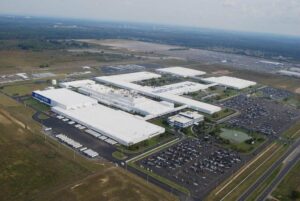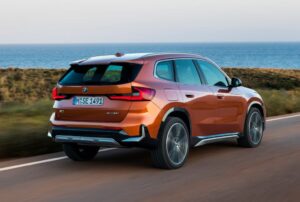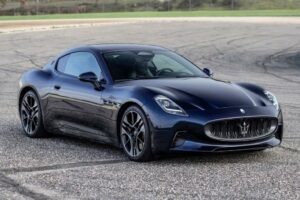Shoichiro Toyoda, the former president and honorary chairman of Toyota Motor Co., passed away from heart failure Tuesday, according to the Japanese automaker. He was 97.
Toyoda is the son of Toyota’s founder, Kiichiro Toyota, and the father of company president Akio Toyoda, who will become Chairman April 1. Toyota Motor Co. intends to hold a farewell gathering for Honorary Chairman Toyoda at a later date.
Building a family business
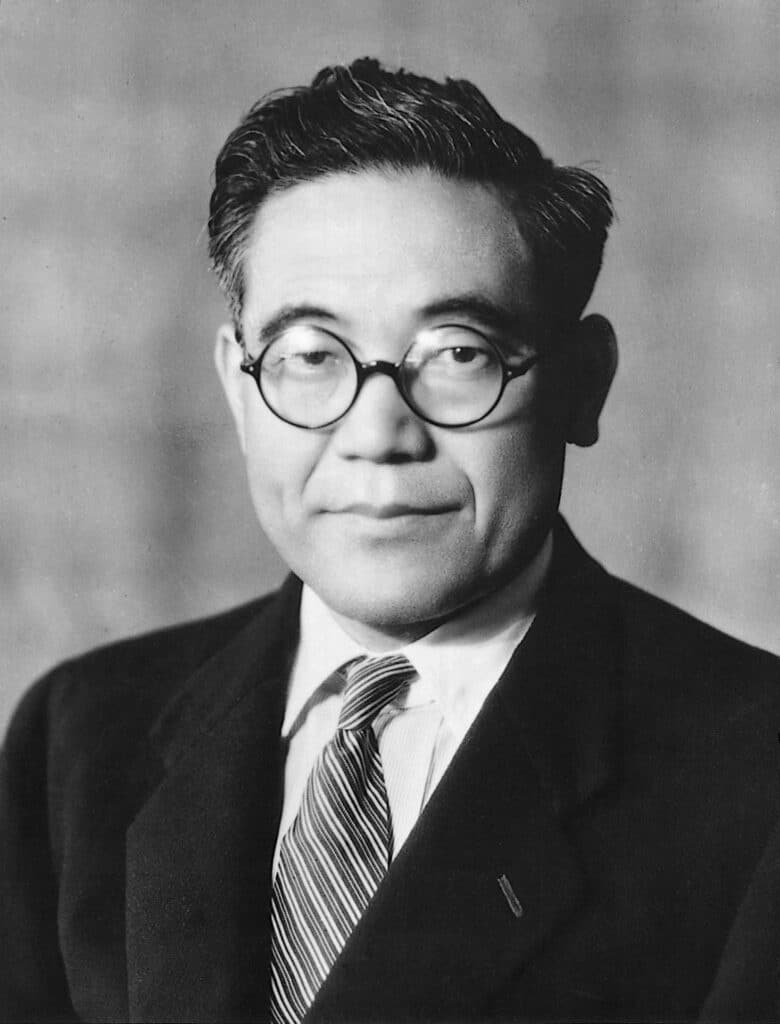
Shoichiro’s legacy is remarkable, having transformed a regional Japanese carmaker into a dominant force in the worldwide auto industry.
Toyota Motor Co. faced an uphill battle when it decided to enter the Japanese auto market before World War II. At the time, American manufacturers accounted for the lion’s share of Japanese car sales. It was Shoichiro’s father, Kiichiro, who determined it was time to “make indigenous Japanese cars using Japanese brains and skills.”
It was 1937, and Kiichiro established Toyota Motor Corp., independent of Toyoda Loom Works, the Toyoda family business. Toyoda was named vice president, becoming company president from 1941 until his resignation in 1950. He died two years later. A non-family member, Taizo Ishida, would replace him, building the company until Kiichiro’s cousin, Eiji Toyoda, served as president from 1967 to 1982.
But it’s Shoichiro, born in 1925 in the Nagoya City, Aichi Prefecture, who would build the modern Toyota.
Growing up in the business
After receiving an engineering degree from Nagoya University in September 1947, Shoichiro joined Toyota Motor Co. in July 1952. He went on to acquire an engineering doctorate, writing his thesis on fuel injection. Quality control, manufacturing management and technology marked Shoichiro’s concerns as he rose through the company. He became a managing director in 1961, even as Toyota’s first product in America, the Toyopet Crown, was withdrawn from the American market. The company’s U.S. arm would survive selling Land Cruiser SUVs until the arrival of the Corona in 1965.
Two years later, Shoichiro was promoted to senior managing director before being named executive vice president in 1972. He became president of Toyota’s sales organization in 1981, then succeeded Eiji Toyoda as president of the newly formed Toyota Motor Corp. in 1982, a result of the merging of Toyota Motor Co., the production unit led by Eiji, and Toyota Motor Sales Co., the latter having been spun off by a consortium of banks as Toyota faced bankruptcy after World War II.
Positioning Toyota for growth

But Toyota Motor Corp. remained an export company. If Toyota was to become a global player, it would have to establish production in other countries. This led Toyoda to consider a joint manufacturing venture, opening talks with General Motors in 1983. Within a year, a new business, New United Motor Manufacturing Inc. (NUMMI), built its first automobile in 1984 in Fremont, California, a plant now owned by Tesla.
The plant helped ease trade friction that arose as Japanese automakers increased their U.S. market share. But the venture helped Toyota gain expertise in globalizing their production, fueling the company’s explosive growth in the 1980s even as the U.S. capped Japanese imports in 1985, forcing Japanese automakers to build more vehicles in the U.S. But it didn’t hinder Toyota, which saw sales reach 4.64 million vehicles by 1992, up from 3.34 million in 1981.
It also led to Toyota opening its Georgetown, Kentucky plant in 1988, now Toyota’s largest manufacturing plant, producing 550,000 vehicles and more than 600,000 engines annually, as well as facilities in England and Canada, among many others. Today, the company has 52 manufacturing facilities outside of Japan, most opened after Shoichiro’s ascension to company president. It was a key driver in transforming the company into the world’s largest automaker, with 40% of Toyotas produced locally in 1992, when Toyoda became chairman of Toyota Motor Co. from through 1999. In 2022, the company sold 8.15 million vehicles worldwide, maintaining its lead as the world’s largest automaker.
Shoichiro also guided the introduction of the automaker’s luxury brand, Lexus, a project started under Eiji. It would forever fortify Toyota’s reputation for quality, a key focus of Shoichiro throughout his life.
He was named honorary chairman of Toyota in 2009. His son, Akio, become president of Toyota in 2010.
Toyoda was inducted into the Automotive Hall of Fame in Dearborn, Mich., in 2007.
- SEO Powered Content & PR Distribution. Get Amplified Today.
- Platoblockchain. Web3 Metaverse Intelligence. Knowledge Amplified. Access Here.
- Source: https://www.thedetroitbureau.com/2023/02/son-of-toyotas-founder-dies-at-age-97/
- 000
- 1
- 1985
- 1999
- 2022
- a
- According
- acquire
- After
- america
- American
- among
- and
- Annually
- April
- ARM
- arrival
- auto
- automakers
- automobile
- Bankruptcy
- Banks
- Battle
- become
- becoming
- before
- being
- born
- brains
- brand
- build
- Building
- built
- business
- california
- Canada
- car
- cars
- chairman
- City
- company
- Company’s
- Concerns
- Consider
- consortium
- control
- Corona
- Corp
- countries
- Crown
- Date
- decided
- Degree
- determined
- died
- Director
- dominant
- driver
- Engineering
- Engines
- England
- Enter
- establish
- established
- Even
- executive
- expertise
- export
- faced
- facilities
- Facility
- Failure
- family
- farewell
- First
- Focus
- Force
- forever
- formed
- Former
- founder
- Fremont
- friction
- from
- Fuel
- Gain
- gathering
- General
- General Motors
- Global
- Growth
- Hall
- having
- Heart
- Heart Failure
- helped
- hinder
- hold
- HTTPS
- imports
- in
- In other
- Inc.
- increased
- independent
- industry
- intends
- Introduction
- IT
- Japan
- Japanese
- joined
- joint
- July
- Kentucky
- Key
- Land
- largest
- lead
- Led
- Legacy
- lexus
- Life
- locally
- loom
- Luxury
- management
- managing
- Managing Director
- Manufacturers
- manufacturing
- many
- marked
- Market
- max-width
- member
- merging
- million
- Modern
- more
- most
- Motor
- Motors
- Named
- New
- opened
- opening
- organization
- Other
- Others
- outside
- owned
- passed
- plato
- Plato Data Intelligence
- PlatoData
- player
- president
- Produced
- Product
- Production
- project
- Promoted
- quality
- reach
- receiving
- regional
- remained
- remarkable
- replace
- reputation
- Resignation
- result
- ROSE
- sales
- Selling
- senior
- September
- Share
- skills
- sold
- son
- spun
- started
- survive
- SUVs
- Talks
- Technology
- Tesla
- The
- their
- Through
- throughout
- time
- to
- today
- toyota
- trade
- transformed
- transforming
- Tuesday
- u.s.
- under
- unit
- United
- university
- Vehicles
- venture
- Vice President
- war
- which
- WHO
- will
- within
- works
- world
- world’s
- worldwide
- would
- writing
- year
- years
- zephyrnet

